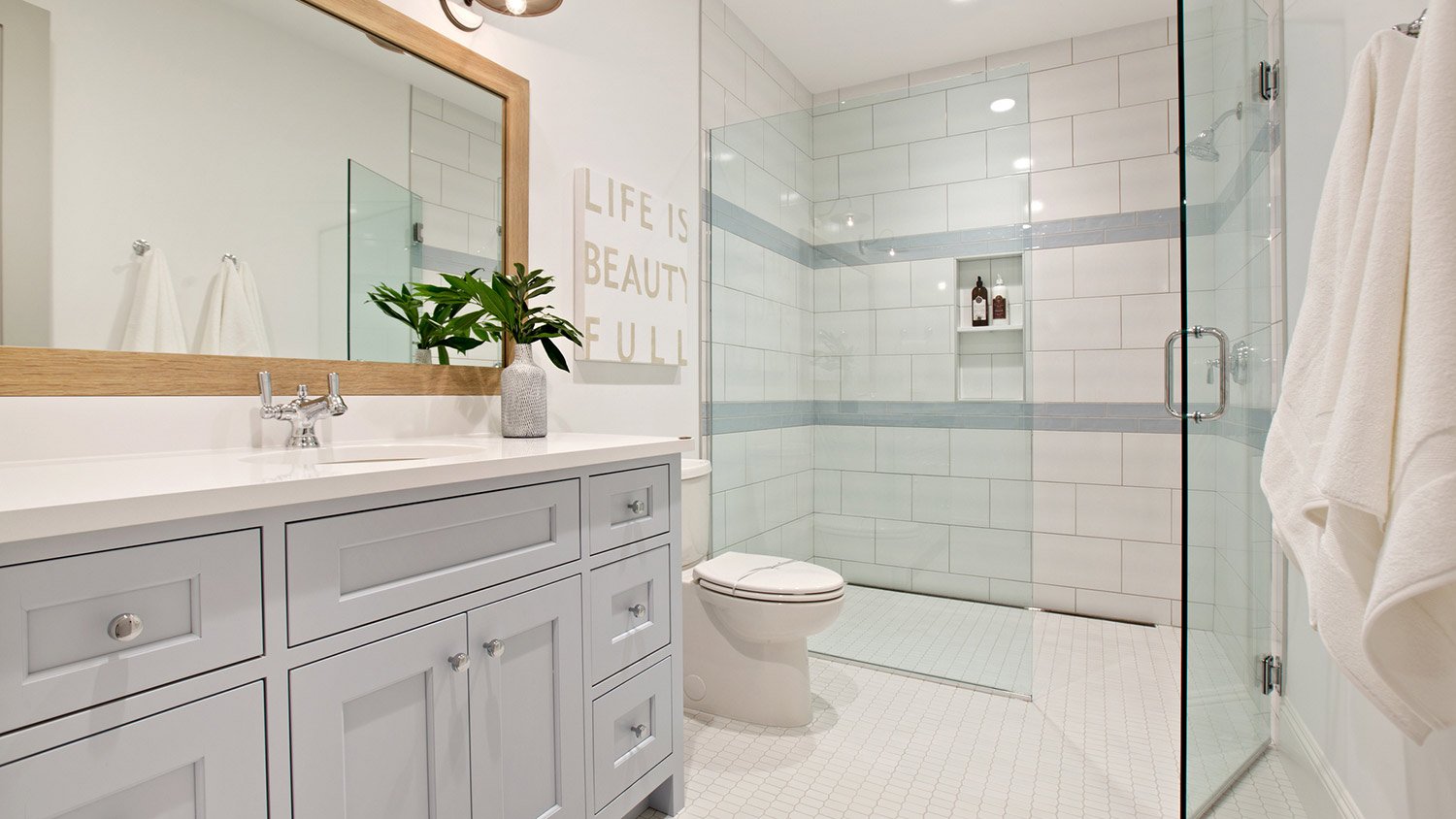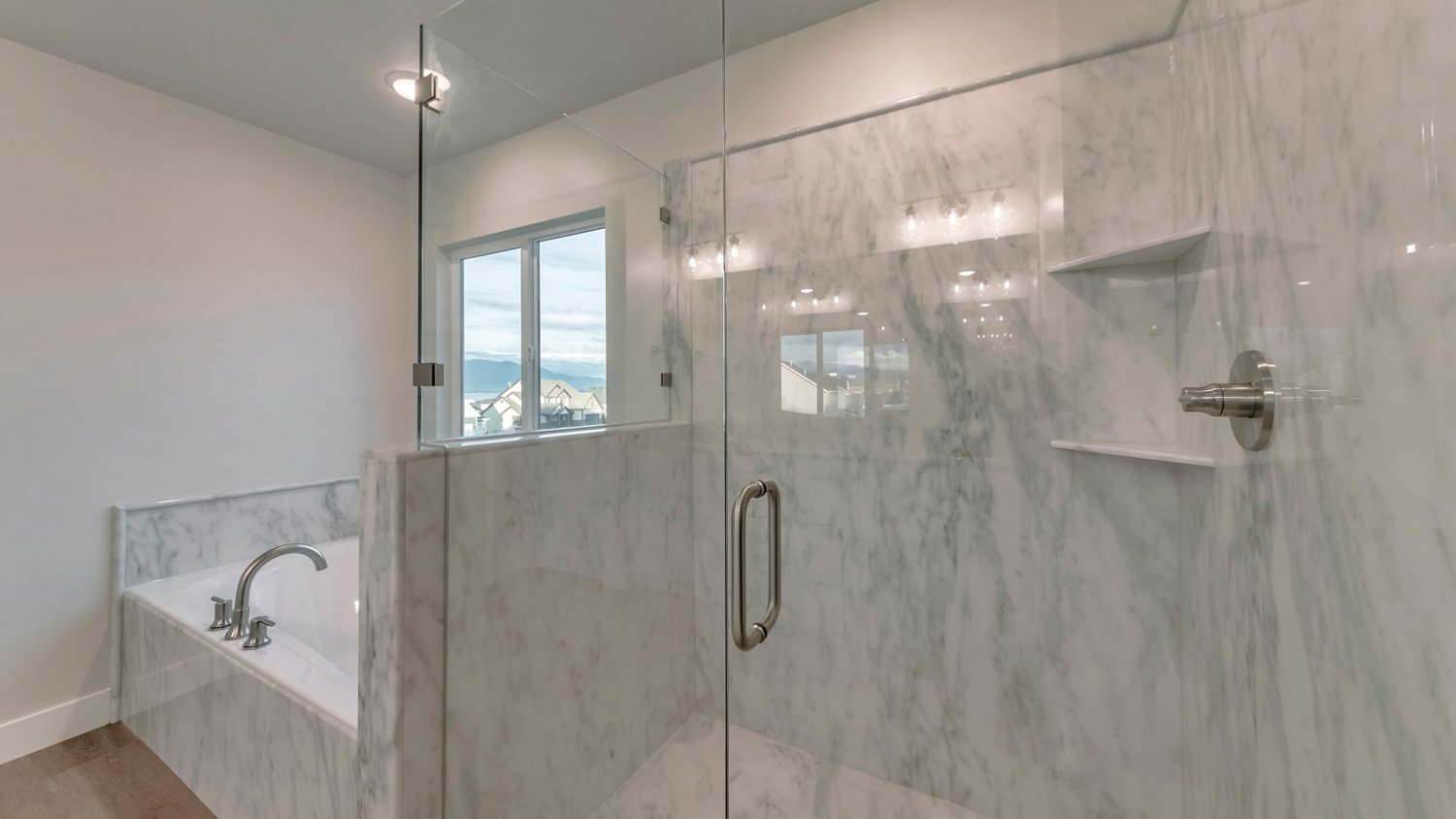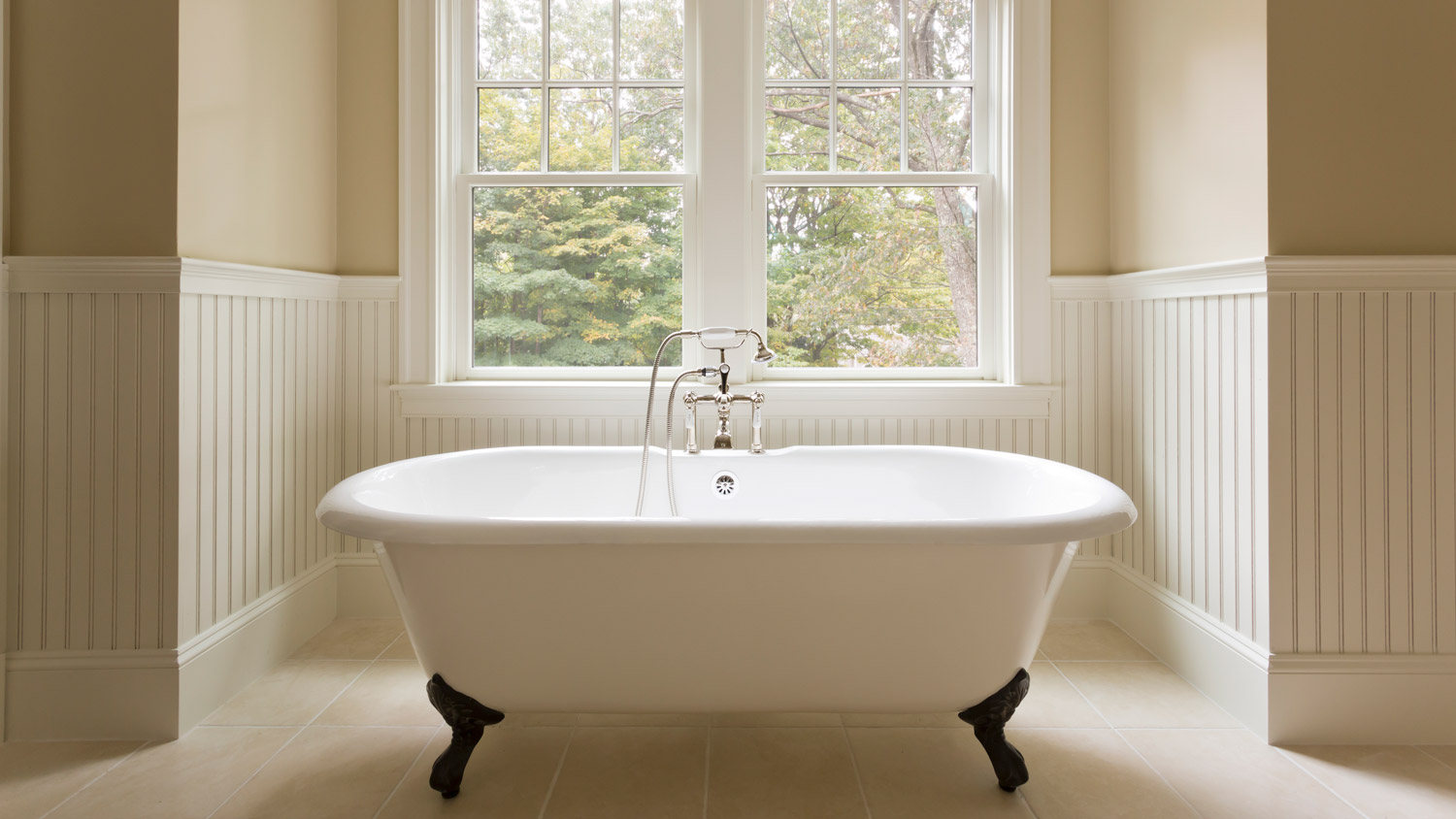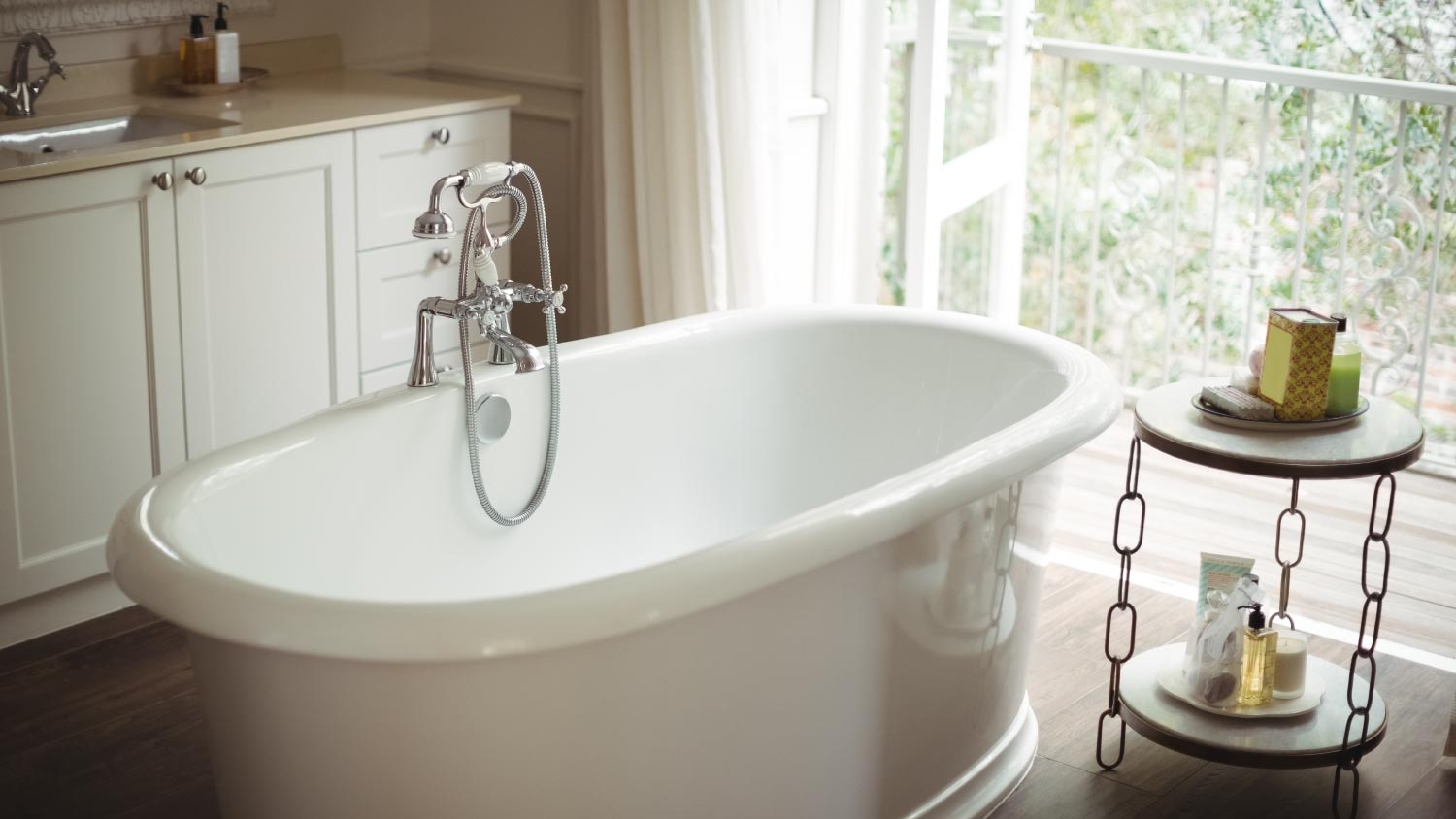
Remodeling your bathroom can add significant value to your home. Your bathroom remodel cost will depend on size, fixtures, materials, labor, and other factors.
If you want an instant update to your bathroom, consider replacing your shower enclosure


Shower enclosures separate your shower area from the rest of your bathroom.
Glass shower door types include sliding, pivot, framed, frameless, and more.
Installation costs $500 to $2,000, or as much as $10,000 for custom options.
Whether you’re talking about a guest bathroom in the basement or an en suite bathroom, the shower enclosure is often the centerpiece of the room. There are various types of shower enclosures for you to choose from, and deciding which shower door is right for you depends on your style and budget.
A shower enclosure is a modern solution to the traditional shower curtain, keeping water out of the rest of your bathroom. Besides their practical uses, enclosures also provide striking visual impact. So, choosing the right one can help elevate your bathroom to the next level.
Installing a shower enclosure has several benefits. The most obvious is the visual aesthetic—it can transform your bathroom from outdated to modern.
In addition to looking fabulous, it’s an easy way to keep your shower area clean. You won’t have to worry about water spilling onto the bathroom floor and causing mold or water damage. This also helps you avoid potential slips and falls, which is a major plus.
And unlike shower curtains, you won’t have to worry about hard-to-see mildew growth. It’s easy to clean and maintain shower enclosures by wiping them down. Plus, most shower enclosure styles have nonporous surfaces, meaning they’re resistant to mildew and mold.
Gone are the days when frosted or clear glass was your only shower door option. Now, there are lots of glass shower design ideas you can consider for your bathroom. When choosing glass for your shower enclosure, think about the thickness and design. Most people opt for clear glass because it’s easy to incorporate into any bathroom design theme.
Bamboo pattern textured glass lends itself to spa- or zen-themed bathrooms. Rain, frosted, opaque, and tinted glass provide a little privacy while also letting light into the shower.
A sliding glass door in an alcove is the most common shower enclosure. An alcove shower has three walls and one threshold, which saves space in smaller bathrooms. The doors don’t swing open, so water stays inside the shower area, reducing the chance of slippery floors.
One disadvantage of sliding doors is that the bottom track accumulates soap scum and gunk. A newer Euroslide option uses a rolling system at the top of the door and eliminates the need for a track.
Pivot glass doors are connected to the shower at the top and bottom and can swing in or out of the shower, like a regular door. Pivot glass doors can add a luxury look to a bathroom. They’re installed without the use of a track. One disadvantage of a pivot glass door is that it can drip water onto the floor when wet.
Once the standard budget option, framed shower enclosures are surrounded on all sides by a visible border that keeps the glass in place. These frames are most often made of metal, but many manufacturers offer a wide variety of finishes suitable to different bathrooms and glass styles.
There are also semi-framed enclosure styles that strike a balance between the classic framed look and contemporary frameless one, and feature frames at the top and bottom of the enclosure glass, but not on the door.

Frameless shower enclosures provide a clear, unobstructed view of the shower, allowing you to show off fancy tile or shower fixtures. Frameless shower enclosures also give a bathroom a more contemporary, open, and spacious feel.
There are many pros and cons of frameless shower doors. For example, frameless shower enclosures are easier to clean. But one of their primary disadvantages is that they require heavier glass, which drives up the cost. Installing heavy glass is challenging, so call a professional shower installer to assemble your shower enclosure.
Sometimes called a shower screen, a glass panel is mounted onto the side of the shower closest to the showerhead. The shield prevents water from splashing onto the floor.
A shower shield can make your bathroom more accessible for those with mobility issues if it’s installed over a threshold-less opening. That way, a person who uses a wheelchair can maneuver in and out of the shower without assistance.
In addition to the shape and style of your shower enclosure, there are also different options for the type of glass it’s made from. While some homeowners prefer the clean style of clear glass, others want the additional privacy and spa-like ambience offered by textured glass. Textured glass can also work to make a shower appear a little more spacious, so it can be a good option in bathrooms where space is tight.
Textured glass for shower enclosures comes in different types:
Obscure glass: From lightly frosted to nearly opaque, there is a range of different types of glass types designed to offer privacy for the user while letting light inside. With obscure glass, however, you will need to install brighter lights in the bathroom to achieve proper illumination in the shower.
Patterned glass: Manufacturers offer patterned glass in a wide array of different designs, from floral schemes to simple checkerboards. A big advantage of these styles is that they’re easy to clean.
Rain glass: Another popular textured option is raindrop or bubble glass, which mimics the appearance of rain streaking down a window, creating an air of serenity as well as privacy. They are also versatile, fitting well within nearly every bathroom design.
Reeded glass: Reeded, or ribbed, glass features textured vertical lines that nicely diffuse light.
Hammered glass: Textured only on one side, hammered glass gets its name from its distinctive pattern reminiscent of hammered metal. One of the more expensive options, it is also less durable than other types of shower glass.
As its name implies, a quadrant shower enclosure is made up of four panes of glass, with the front door pieces curved—which is why they’re also called semi-oval enclosures. Especially popular throughout Europe, the curvature of the door makes these enclosures a perfect corner fit for smaller bathrooms, like en suites—minimizing square footage without sacrificing style. Because the curved class has to be custom fabricated, quadrants are one of the more expensive enclosure styles.
If your bathroom features a luxurious double shower built for two, or you’re planning to install one, you can complete the puzzle with a dual entrance enclosure. Typically installed in his-and-hers bathrooms, this style of enclosure makes for easy access from either side of the space, whether the occasion is romantic or a hectic moment requiring maximum efficiency.
One of the more dramatic shower enclosure options is those without a shower door altogether. To pull this off you need a shower with a draining system that pulls water away from the shower entrance. One major disadvantage to an open entrance is that it requires more space than a shower enclosure with a door. You need extra space to ensure water doesn’t spill outside of the wet zone.
Before you dive into your shower enclosure installation project, consider the following factors. Depending on your must-have bathroom remodel ideas and the vision you have for your bathroom, preparing for what’s to come will help you stay within your budget.
Decide whether you are replacing the shower enclosure, updating the entire shower, or doing a complete bathroom remodel. If you’re just updating the shower enclosure, you might be able to do this yourself and save on bathroom remodel costs. However, if you’re remodeling the shower or renovating the bath, you may have to hire various pros:
A local plumber to move any plumbing or add fixtures
An electrician near you to install shower lighting or fans
A bathroom tile installer to add any new tile in your shower
A bathroom designer to conceptualize the project
You should also decide whether or not you’re considering a custom-built shower enclosure, or if you’re sticking to prefabricated models.
Prefabricated shower enclosures are significantly more affordable than custom options, coming in a variety of standard sizes. They are also designed for simple DIY installation. Style choices, however, are significantly more limited, with most prefab enclosure sets coming in fiberglass, plastic, and fiberglass. White and off-white are the most common colors, but with a little digging, homeowners can find a wider array of shades.
Custom enclosures are built to the specifics of your shower and to your taste. Expect to pay additional costs not only for the design and premium materials, but also for professional installation, since a DIY install of a custom enclosure is too risky and complex for most homeowners.
Measure the space available to ensure that the enclosure fits comfortably without making the room feel cramped. We recommend having at least 30 inches of clear floor space between the front of the shower and any opposite fixture, wall, or obstacle.
Evaluate the layout of your bathroom to determine the most suitable shape and configuration for your enclosure, taking into account factors such as the door's swing direction and clearance so it’s accessible and functional.
You want a tempered glass enclosure because of its strength and safety features. It's designed to shatter into tiny, blunt pieces rather than sharp shards, reducing the risk of injury in case of breakage. The best glass thickness is 3/8 to 1/2 inch for greater stability and durability.
Some homeowners may prefer clear glass, which can make a bathroom feel more open or airy, or textured or frosted privacy glass for busy bathrooms that require privacy. Standard clear tempered glass is less expensive than privacy glass types.
Shower trays ensure seamless installation and optimal functionality. They are made from acrylic, fiberglass, stone resin, or porcelain, offering a range of prices and advantages for homeowners. When deciding, consider drainage position and type. Standard options include center positions or even hidden drains for a sleek appearance.
The type of shower tray you choose can significantly impact accessibility. It's essential to consider the height of the shower tray to your bathroom floor and the ease of entry, especially for individuals with mobility concerns. Low-profile trays offer easier access and a modern aesthetic, while raised trays may provide better water containment.
Adequate wall protection prevents water damage and maintains the surrounding structure's integrity for a shower enclosure. Use waterproof, durable, mold, and mildew-resistant materials: Standard options include moisture-resistant cement boards, waterproof gypsum boards, and a waterproof membrane behind the tile or other wall covering.
During the installation, ensure you have tight seals around seams and corners. We would be remiss if we didn't stress the importance of regular maintenance and cleaning, which will help prolong the life of the shower enclosure and prevent any water-related issues.
Other solutions can work with your bathroom’s functionality and style if you don't want to install a shower enclosure. Alternatives include:
Shower curtains: This classic and inexpensive solution works for most bathrooms, but you have to watch out for mold and mildew growth and water containment issues. For the best results, install a curved shower rod to maximize shower space and prevent the curtain from clinging.
Shower curtain systems: These modern track-mounted solutions function better than regular shower curtains and feel more permanent. You can customize the ceiling-mounted tracks to follow most shower configurations.
Natural stone or glass block partitions: Fixed dividing walls made of stone or glass blocks create a permanent shower division without requiring doors or frames. You can build these partitions to your desired height and incorporate extra features like built-in shelving or seating.
Steam shower conversions: If you fully seal the area and install proper drainage and a steam generator, you can turn your shower space into a steam shower. You’ll need professional waterproofing for the ceiling and walls as well as a vapor-tight door. You can also add benches for comfort, so keep in mind that this is an expensive upgrade.
While these alternatives exist, investing in a proper shower enclosure is often the most practical option for most homeowners. They provide superior water containment, are easer to clean, and need minimal maintenance.
Shower installation costs depend on materials, labor, and plumbing. A shower enclosure can range from as little as $500 for replacement glass to $2,000 for a prefabricated kit to more than $10,000 for a custom-built shower.
You don’t have to be a Jedi-level DIYer to install a shower enclosure. So doing this job yourself could be a way to save on shower door installation costs. However, if you’re intimidated by the idea of handling large glass panels, it’s best to hire a professional shower installer in your area.
From average costs to expert advice, get all the answers you need to get your job done.

Remodeling your bathroom can add significant value to your home. Your bathroom remodel cost will depend on size, fixtures, materials, labor, and other factors.

Forget the spa. Steam showers bring the luxury right into your home. This guide will help you budget steam shower costs—no matter the specs.

The cost to install a window seat depends on several factors, such as materials, labor, and options. Here’s a breakdown of the cost to install a window seat.

An updated bathtub can give a bathroom a whole new look. Find out how much it costs to replace a bathtub in San Francisco, CA, including prices by type and labor costs.

DIY sink installation is a doozy but do-able for those with experience. Use this guide to learn how to install a bathroom sink in a few steps.

An updated bathtub can give a bathroom a whole new look. Find out how much it costs to replace a bathtub in Los Angeles, CA, including prices by type and labor costs.